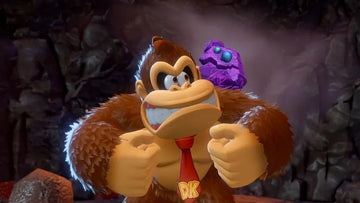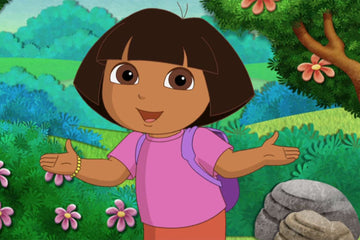Donkey Kong has been a defining figure in video game history since his debut in 1981. Over the decades, the franchise has evolved significantly, reflecting changes in gaming technology and player preferences. The series progressed from simple arcade platforming to complex adventures, achieving lasting appeal through innovation and memorable characters.
The 1990s are often seen as the franchise’s golden era, highlighted by the critically acclaimed Donkey Kong Country trilogy and spin-offs like Diddy Kong Racing. This period helped establish Donkey Kong as a household name and cemented his role in Nintendo’s legacy. Later decades continued to expand the universe with new gameplay styles while maintaining the core elements fans love.
Understanding Donkey Kong’s journey over the years reveals much about both the character and the wider video game industry. The franchise’s ability to adapt while staying true to its roots explains its continuing success and cultural relevance. For a detailed look at this timeline, see the full history of Donkey Kong through each decade.
Key Takeaways
Donkey Kong has continuously adapted to trends in gaming technology.
The 1990s marked a pivotal period of popularity and innovation.
The franchise’s lasting success stems from balancing change with tradition.
Origins and Early Impact
Donkey Kong emerged as a groundbreaking arcade game in the early 1980s. It introduced innovative gameplay mechanics and distinct characters that shaped the video game industry’s direction. Its cultural resonance extended well beyond the arcade scene, influencing players and developers alike.

Arcade Debut and Game Design
Released by Nintendo in 1981, Donkey Kong was designed by Shigeru Miyamoto. It was created to repurpose unsold Radar Scope arcade cabinets. The game features a multi-level design with platforms, ladders, and obstacles.
Players control Jumpman (later known as Mario), who must rescue a character named Pauline from Donkey Kong. This setup introduced a clear narrative goal unusual for its time.
Mechanically, the game is structured around timed jumps and avoiding hazards like barrels and fireballs. Its straightforward controls and rising difficulty helped establish the platformer genre’s fundamentals.
Donkey Kong’s Influence on Platformers
Donkey Kong is often credited with laying the groundwork for platformer games. It combined precise jumping mechanics with obstacle navigation, key elements still used today.
Its success showed that character-driven stories could be integrated into arcade gameplay. This encouraged developers to explore narratives alongside gameplay challenges.
The game also introduced dynamic, vertically oriented levels, a departure from the flat stages common in earlier games. These innovations influenced later titles such as Super Mario Bros.
Cultural Reception in the 1980s
Donkey Kong quickly became a cultural phenomenon after its release. It was a commercial success and helped Nintendo establish a foothold in the North American market.
The game’s characters, especially Donkey Kong and Mario, gained iconic status. Mario’s debut shifted him to the forefront of video game mascots.
Arcade operators reported high earnings from the game, reflecting its popularity. It also sparked competitive play, with high scores becoming a key part of arcade culture.
For more about the game's origins and design, see Donkey Kong’s arcade debut and history.
Evolution Across the Decades
Donkey Kong’s design and gameplay have changed significantly since its 1981 debut. Each era introduced new mechanics, aesthetics, and platforms that shaped how players experienced the character and his world.
Transition to Home Consoles
Donkey Kong first appeared as an arcade game in 1981, featuring simple 2D platforming. The transition to home consoles like the Nintendo Entertainment System (NES) expanded gameplay depth and accessibility.
Early home versions preserved the classic arcade style but allowed players to play at their own pace. The 1983 “Donkey Kong Jr.” and later “Donkey Kong 3” began experimenting with different game mechanics beyond the original level structure.
This period established Donkey Kong as a household name and prepared players for more complex adventures. The move to consoles also introduced Donkey Kong to a wider audience outside arcades.
Donkey Kong Country Era
The 1994 release of Donkey Kong Country on the Super Nintendo Entertainment System marked a major shift. It featured pre-rendered 3D graphics and advanced animation, setting new standards for visual design in platformers.
The series introduced new characters like Diddy Kong and a deeper focus on exploration. Its challenging levels and detailed environments diversified the gameplay experience.
Three handheld games, known as the Donkey Kong Land series, followed in 1995 to 1997, adapting the console gameplay for the Game Boy. This era revitalized the franchise and solidified Donkey Kong as a key Nintendo character.

Modern Iterations and Spin-Offs
In recent decades, Donkey Kong appeared in varied roles beyond traditional platformers. Titles like Donkey Kong Jungle Beat and Donkey Kong Barrel Blast experimented with alternative controls and racing elements.
The character also plays prominently in multiplayer and party games such as Mario Kart 8 and the Super Smash Bros. series. These appearances maintain fan engagement by showcasing Donkey Kong’s style in different gameplay contexts.
The latest design changes, including those previewed in the Nintendo Switch 2’s Mario Kart teaser, reflect closer ties to his movie portrayal, indicating ongoing evolution in character design after over 30 years.
Technological Advancements in Donkey Kong Games
Technological improvements impacted Donkey Kong’s gameplay and graphics. Early pixel art gave way to pre-rendered 3D models in the '90s, enhancing visual fidelity and animation smoothness.
Later games utilized full 3D environments and HD graphics, with titles like Donkey Kong Country: Tropical Freeze offering complex level design and dynamic soundtracks.
Motion controls, touchscreens, and online play expanded interactivity, while advances in AI presented smarter enemy behavior. These technological shifts helped keep the franchise relevant amid changing player expectations.
More about this progression can be found by exploring the timeline in the Donkey Kong evolution article on The Quint.
Legacy and Enduring Popularity
Donkey Kong remains a significant figure in gaming, maintaining relevance through consistent interaction with players and culture. Its role in shaping game mechanics and character design continues to influence developers and fans alike.
Influence on Modern Gaming
Donkey Kong's gameplay introduced mechanics that became staples in platformers, like precise jumping and obstacle navigation. The success of Donkey Kong Country in the 1990s reaffirmed that 2D gameplay retained strong appeal amid the rise of 3D games. Developers often cite its level design and balance of challenge with accessibility as models for modern platform titles.
The character also helped popularize the concept of a franchise mascot, influencing how companies develop recurring protagonists. This lasting influence is visible in contemporary games that emphasize clear, engaging mechanics and memorable characters to establish enduring franchises.
Donkey Kong in Pop Culture
Donkey Kong's image extends beyond gaming into broader popular culture. It has appeared in various media such as animated series, merchandise, and crossovers in franchises like Super Smash Bros. Its distinct personality and iconic design make it instantly recognizable outside the gaming community.
The character's presence in Mario Kart and Mario Party further cements its role in Nintendo’s brand identity. This maintained visibility continually introduces Donkey Kong to new generations, contributing to its sustained popularity.

Preservation and Community Engagement
Donkey Kong’s legacy is supported by active fan communities and dedicated preservation efforts. Classic arcade machines and consoles with Donkey Kong titles are preserved by collectors and museums, ensuring accessibility to original gameplay experiences.
Online communities create fan art, mods, and speedrunning events, fostering ongoing engagement. Nintendo’s occasional re-releases and remasters of Donkey Kong games also maintain its presence in modern gaming, encouraging both nostalgia and discovery.
For in-depth history and cultural impact, see Donkey Kong’s complete history and enduring appeal.
Frequently Asked Questions
Donkey Kong’s character design has shifted from a simple arcade ape to a detailed hero with a distinct personality. The series’ gameplay mechanics expanded from single-screen platforming to diverse action and puzzle elements. The franchise influenced numerous platformers with its innovative level design and character-driven narratives.
What are the key evolution points in Donkey Kong's character design?
Initially, Donkey Kong was portrayed as a villainous ape in the 1981 arcade game. Over time, especially starting with Donkey Kong Country on the SNES, he evolved into a heroic figure defending his jungle.
His design shifted to more detailed, expressive CGI-rendered visuals. Accessories like his signature red tie became defining traits, adding personality beyond his original blocky look.
How has the gameplay of Donkey Kong series evolved since its inception?
The original Donkey Kong featured simple platform climbing and barrel dodging on single screens. Later titles like Donkey Kong Country introduced multi-layered side-scrolling levels with varied moves.
Subsequent games incorporated puzzle-solving, vehicle sections, and cooperative play. The Mario vs. Donkey Kong spin-offs focus on puzzle mechanics rather than pure platforming, showing diversification.

What is the impact of Donkey Kong games on the platformer genre?
Donkey Kong helped establish many platformer conventions, such as jumping-based obstacle navigation and engaging boss encounters. Donkey Kong Country was notable for its advanced graphics and smooth gameplay, setting a new quality benchmark in the 1990s.
Its success inspired developers to create detailed environments and complex character abilities within platformers, influencing many subsequent franchises and designs.
Can you list the spin-off titles that feature Donkey Kong characters?
Some key spin-offs include Donkey Kong Jr., Donkey Kong 3, and the Mario vs. Donkey Kong series across various Nintendo handhelds. Donkey Kong Bananza marks a modern return as a starring title after more than a decade.
These games explore different gameplay styles, from action to puzzles, broadening the franchise’s reach.
What are the major protagonists and antagonists introduced in the Donkey Kong series?
Donkey Kong, often paired with his nephew Diddy Kong, serve as the main protagonists. They defend their home against villains like King K. Rool, the crocodilian antagonist introduced in Donkey Kong Country.
Other characters like Cranky Kong and Dixie Kong also play significant roles. Mario originally appeared as Donkey Kong’s adversary but evolved into a separate hero in later games.
How has Donkey Kong's musical theme evolved with technological advancements in gaming?
The original arcade theme was simple but catchy, using limited sound channels. Donkey Kong Country enhanced music complexity with atmospheric, synthesized tracks thanks to the SNES’s audio capabilities.
Modern games use full orchestration or high-quality digital sound, reflecting improvements in hardware and music production techniques while maintaining recognizable motifs.
For more detailed history, see Donkey Kong’s comprehensive evolution on Yardbarker.





